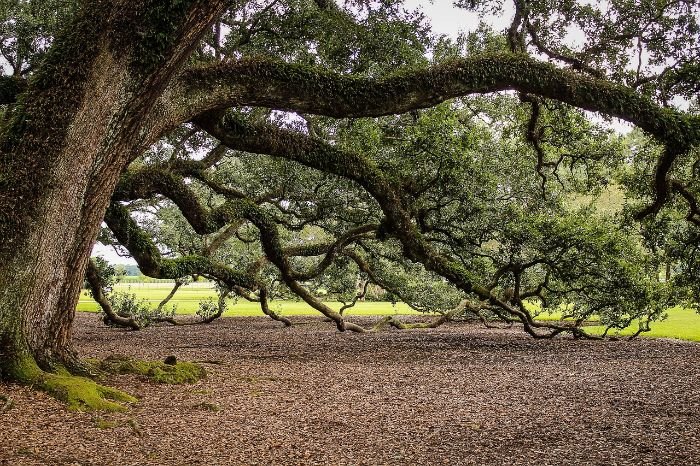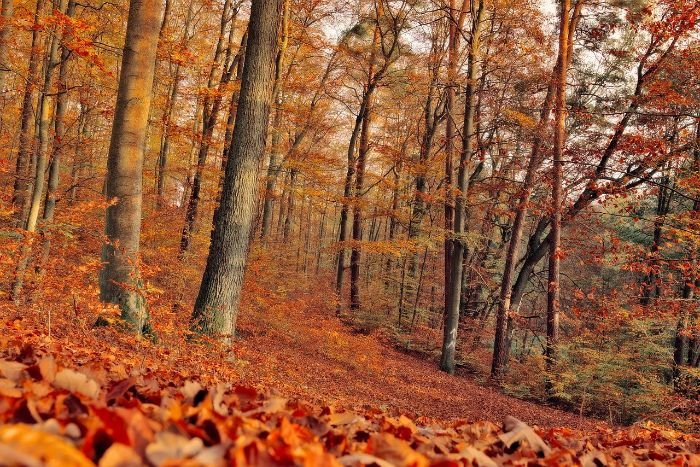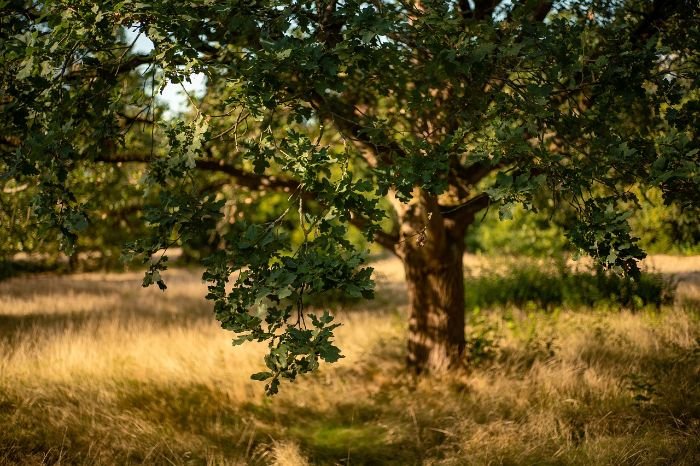Did you know there are over 500 kinds of oak trees in the world? Oak trees vary a lot and provide many options for your yard. You can pick a big shade tree or a lovely focal point tree. The right oak tree can really change your outdoor area.
Choosing an oak tree for your yard means thinking about a few things. The weather, how much sun the spot gets, how wet the soil is, and what look you want are all important. These help decide which oak tree will do best for you.
Now, let’s look at how to pick the best oak tree for your yard. We’ll talk about the different kinds of oaks, and how to match them with your area’s climate and soil. We aim to give you the info and advice you need for a smart choice.
Key Takeaways:
- There are over 500 different varieties of oak trees worldwide, offering a wide range of options for your landscape.
- When selecting an oak tree, consider factors such as climate, sun exposure, soil moisture, and the desired aesthetic.
- Understanding the diversity of oak species will help you make an informed decision.
- Assessing your local climate and soil conditions is crucial for the success of your oak tree.
- By considering these key factors, you can select the right oak tree to enhance the beauty and functionality of your landscape.
Table of Contents
Understanding the Diversity of Oak Trees
Oak trees come from the genus Quercus, offering over 500 different species. They vary in looks, how they grow, and where they like to live. Knowing this variety is important when picking an oak tree for your yard.
An Overview of Common Oak Species
Many oak types are found around the world. Some popular ones are:
- White Oak (Quercus alba) – It has bright bark and strong wood. White oaks are big and last a long time. They do well in many soils and look great in the autumn.
- Red Oak (Quercus rubra) – This oak has red bark and grows quickly. It makes landscapes more colorful. It likes well-drained land and provides good shade.
- English Oak (Quercus robur) – From Europe, English oaks are large and live for hundreds of years. They grow in various soils and attract lots of wildlife with their acorns.
There are many more oak species than just the ones listed here.
Characteristics That Define Different Oaks
Each oak type has special features that make it unique. They include:
- Leaf Shape – Oak trees have different leaf shapes, like lobed or with saw-tooth edges. Leaf shapes help tell oak types apart.
- Growth Habits – Oaks grow in various ways, from tall and straight to wide or droopy. This affects how they look in your yard.
- Bark Texture – Oak tree barks can be smooth or rough, and patterns can be deep or shallow. The bark adds to a tree’s beauty.
- Acorn Size and Shape – Acorns differ in size and shape too, which can help you identify oak species.

The picture shows how oak trees can look very different. It highlights the huge variety within the Quercus genus.
Assessing Your Local Climate for Oak Trees
The climate is key in how well oak trees do in your area. It’s vital to know your local climate and what oak types do well there. This helps your trees grow strong and beautiful by picking the right ones for your climate.
Climate Zones and Suitable Oak Varieties
Look at your local climate when choosing oak trees. Climate zones depend on things like how hot or cold it gets, how much it rains, and the season length. Different oak types do better in specific climate zones because they are used to certain conditions.
Find out which oak trees match your climate by talking to local experts. Nurseries, arborists, and gardening resources can give you advice based on what they know about your climate. This can help you plant trees that will flourish in your yard.

Weather Considerations for Thriving Oaks
But besides climate, think about the weather, too, for growing oaks well. Bad weather like storms, heatwaves, and droughts can hurt oak trees. Always keep extreme weather in mind to protect your trees.
Choose oak trees that are tough against your local weather. Some handle strong winds, while others do well in dry times. Matching trees to your weather can help them last longer with less damage.
Watch the weather and do what you can to keep your oak trees safe. This might mean giving extra water or setting up wind protection when needed. Taking care of your trees this way will keep them healthy and strong.
Analyzing Soil Conditions for Oak Trees
Soil matters a lot for oak trees to grow well. Different kinds of oaks like different soils. It’s key to know which soil suits which oak before planting in your yard.
Soil Types and Their Suitability for Specific Oaks
Oak trees do best in different soil types. Each soil type is good for certain oak kinds. Common types are loam, clay, sand, and silt. Let’s look at how each is good for oak trees:
- Loam – Loam is perfect for oak trees. It mixes sand, silt, and clay. It drains well but also holds moisture. This is great for oak roots.
- Clay – Clay soil is heavy but keeps water well. It nourishes oak trees but needs good drainage to avoid waterlogging and root rot.
- Sand – Sand lets water through fast but doesn’t keep moisture well. Oaks in this soil may need extra water and help staying moist.
- Silt – Silt is smooth and keeps water better. But it can get hard when dry. Adding organic stuff can make it richer and better for oaks.
Some oak types indeed love certain soils. For instance, pin oaks like damp, loamy areas. But Southern live oaks can grow in many soils, from sandy to clay-based ones.
Preparing Your Soil for Oak Planting
Growing oaks means getting the soil ready. Here’s how to prep for planting an oak:
- Test the soil – Begin with a soil test. Find out its pH, what nutrients it has or lacks. This lets you adjust the soil just right for oaks.
- Amend the soil – After the test, add things your soil needs. This includes organic material, compost, and special tree fertilizers.
- Improve drainage – Ensure your soil can drain well. This might involve adding organic matter or even setting up a drainage system to avoid waterlogging.
- Remove weeds and obstacles – Before planting, get rid of things that could block root growth, like weeds and rocks.
By doing these steps, the soil will be great for oaks. With well-prepared soil, your oak trees can grow strong and healthy.
Choosing Oak Trees Based on Landscape Design
Oak trees are known for their big size and lasting a long time. They are great for making any outdoor area look better. When you pick oak trees for your yard, think about how they will fit your style. This makes your outdoor space look the way you want.
Matching Oak Trees to Your Landscape Aesthetic
Everyone has different ideas about how a yard should look. It’s important to choose oak trees that match your style. Think about size, shape, and the look of the leaves. This helps your yard feel and look the way you want.
- Size – Pick the right size oak tree for your yard. Some get very tall and wide, making them look grand. Others are smaller and good for tighter spaces.
- Shape – Oak trees come in different shapes. You can find ones with wide branches or tall and skinny ones. Choose a shape that works with your yard’s design.
- Foliage – Oak trees have many different leaves. Look for ones that go well with other plants and help create the right mood in your yard.
- Overall Appearance – Think about how the tree will add to your yard’s look. Look at its bark, branches, and any special features. Pick a tree that fits your design.
Thinking about size, shape, and more helps you pick oak trees that blend well. They will make your yard look better and feel complete.
Space Requirements and Growth Patterns
It’s important to know how much room and what kind of care oak trees need. This helps you place them wisely and plan for the future of your yard:
- Space Requirements – Oak trees need different amounts of space to grow well. Be sure they have enough room to spread out. This stops them from getting in the way or causing problems.
- Growth Patterns – Oak trees grow at different speeds. Make sure you know how fast they grow. This helps you take care of them over time and keep other parts of your yard safe.
Planning for the right space and care for oak trees makes your yard look and grow better. It also keeps these amazing trees strong and healthy.
Planting and Caring for Your Oak Tree
Choosing the best oak tree for your yard is just the start. It’s also important to plant and care for it the right way. This will help it stay healthy and grow well over time. Let’s look at how to plant an oak tree:
Site Selection
Select a spot that gets plenty of sun and has good drainage. Also, make sure it’s away from underground utilities or other structures. This will help your oak tree grow freely.
Digging the Planting Hole
Make sure the hole is twice as wide as the root ball and just as deep. This helps the roots grow. Loosen the soil at the bottom of the hole to help your tree’s roots spread out.
Proper Tree Placement
Put the tree in so its root flare is level with the ground or a bit higher. Fill the hole back in with the loose soil. Pack it gently around the tree’s roots.
After planting, caring for your oak tree is key to its health:
Watering
Gently water your newly planted oak tree right after planting. After that, water deep but not often. Make sure the soil is moist, but not soaked. Change your watering as the weather changes.
Fertilizing
Use a slow-release fertilizer made for trees in the spring. Don’t use too much, since it could harm your tree. Follow the directions carefully.
Pruning
Cut back your oak tree’s branches when it’s not growing. Take out any branches that are broken or cross each other. But, don’t cut too much at once. It could upset your tree and make it sick.
Pest Management
Check your oak tree often for bugs or diseases. Look for leaves that change color, spots, or fall off. If you’re worried, talk to a tree expert or your local extension service.
By sticking to these tips, you can help your oak tree get a good start and grow well in your yard.
FAQ
What factors should I consider when selecting an oak tree for my landscape?
Think about the climate, sun, soil moisture, and the look you want when picking an oak tree.
How many different varieties of oak trees are there worldwide?
There are over 500 kinds of oak trees all around the world.
What are some common oak species and their characteristics?
Red Oak, White Oak, and Pin Oak are some popular types. Each one has its own special traits and needs.
How does climate impact the growth and health of oak trees?
The climate is key to an oak tree’s success. They do best in certain zones, and weather affects how they grow and stay healthy.
What are some weather considerations for ensuring thriving oak trees?
Rainfall, heat, and wind affect oak trees. They may need extra care in extreme weather to do well.
What are the different soil types and their suitability for oak varieties?
Loam, clay, and sandy soils suit different oak types. Knowing your soil helps pick the best oak trees for your land.
How should I care for my oak tree?
Caring includes watering, adding fertilizer, pruning, and keeping pests away. Keep an eye on your tree to make sure it stays healthy and grows well.










